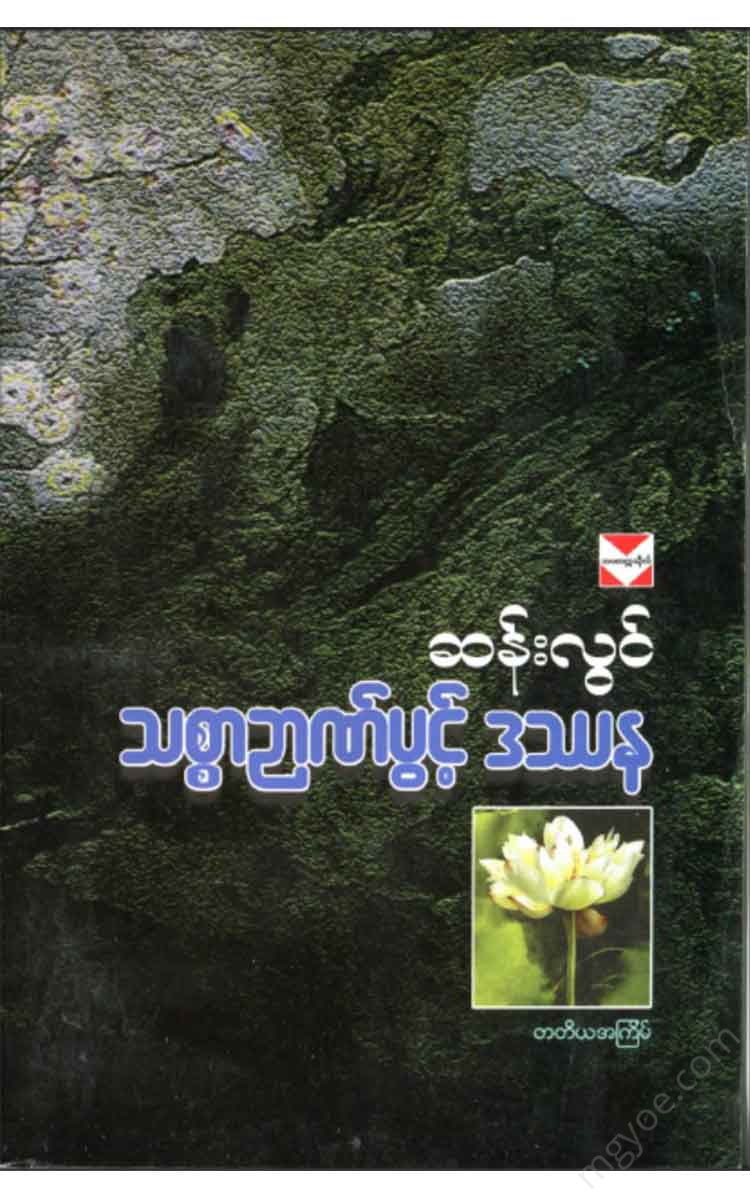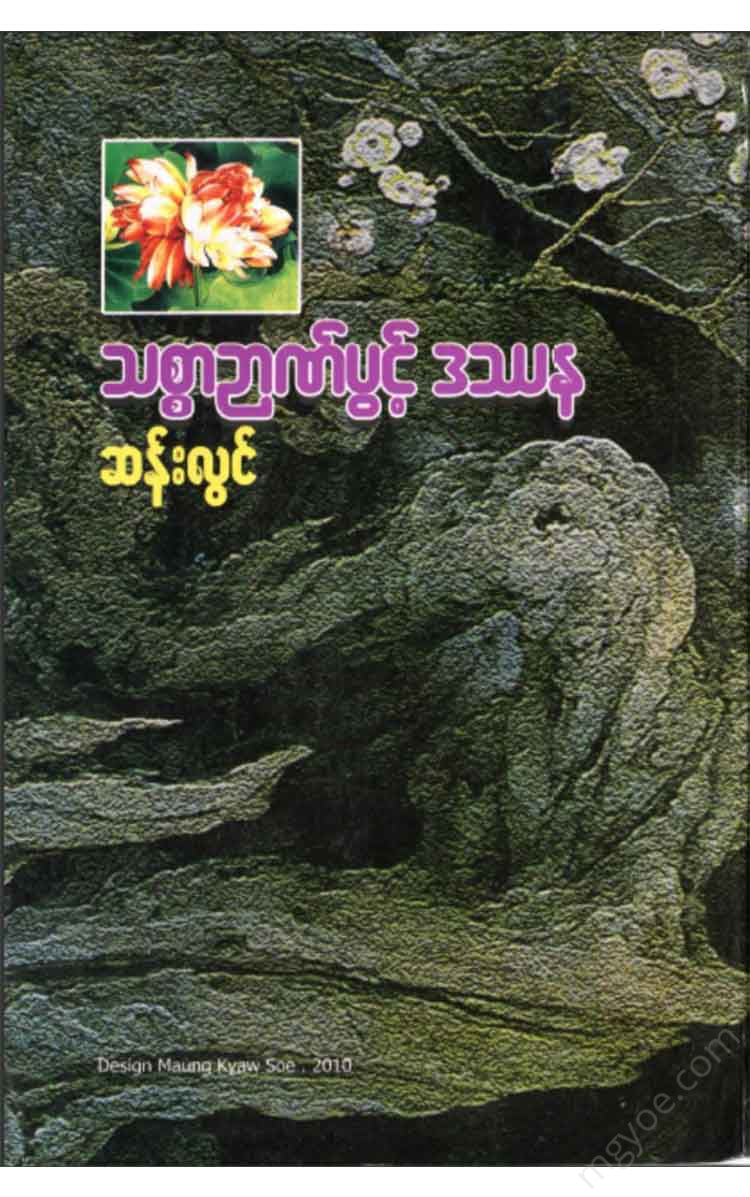Other Websites
San Lwin - The Philosophy of Truth and Wisdom
San Lwin - The Philosophy of Truth and Wisdom
Couldn't load pickup availability
Namo-tassa, Bhagavad-gāda, Arhat-gāda, Sammasambuddha-gāda.
Second printing of the paper
Reason
People have an external consciousness that is aware of the senses, and people also have an internal consciousness that is unaware of the senses. The external consciousness sees and hears the impermanent nature of the world, but does not observe it, so it does not see "immortality" , and that mind does not know "immortality". The internal consciousness sees and hears it, but does not observe it, so it sees "immortality", and that mind also knows "immortality". That nature is obvious. The external consciousness does not see "immortality" when something that exists is destroyed , and because it does not observe "immortality", it does not know destruction as change.
The mind is attached to the law of destruction and becomes restless. It does not want to see destruction, it does not want to fear death. If the inner mind sees something that is happening for a long time, it becomes bored and disgusted. It sees the destruction and change. It also loves it. It knows in advance that when the old disappears, the new will come in its place. That mind has the divine focus. It always sees death as the change of the old and the new. Therefore, the nature of the human mind is that the outer mind does not want to change, but the inner mind wants to change. It wants to see death. It wants something new. The outer mind cannot make human life progress. Only the inner mind can make it progress. If a human being can decipher the riddles written by the inner mind, then human life can be free from all suffering. The external mind can only perceive and hear certain visual and auditory qualities, such as white, red, hot, cold, hard, soft, moving, still, and sour. But the external mind cannot know what is right or wrong, only the inner mind can know. Only the inner mind knows the "Dhamma. "
I have tried my best to explain the concept of ajna to make it interesting.
When it was first published, only the completed works were printed, leaving out the philosophical writings that were still being written.
Now that the second edition of The Philosophy of Truth is being published, there are many more philosophical articles to be added, so I honestly report that I have added the remaining articles here and published them to include everything that has been written.
Author
Namo-tassa, Bhagavad-gāda, Arhat-gāda, Sammasambuddha-gāda.
A forward-looking and realistic literary ideology
Introduction to my thoughts
A person who sells goods is called a merchant. A person who sells a market is called a market. A person who sells flowers is called a flower. A person who sells boiled beans is called a boiled bean. A person who sells massage is called a massage. If that is true, then a person who sells thoughts should be called a “thinker.”
The pen name “San Lwin” writes “thoughts” and he sells “thoughts”. Therefore, he should also be called “thinker”. True wisdom is the thought of San Lwin. That kind of writing is unique. It is not a philosophical writing. It is not a literary writing. It is not a poetic writing. It is not a poem.
It's not just prose. It's a language. This type of writing is called an aphorism in English literature. It also exists in Buddhist literature. That writing can be called a sutta.
That's right. Thought is a sutra. The depth is shown in a concise way. It is a concise way. In every letter there is a thought. The letter opens the thought. The thought closes the letter. Therefore, the letter opens the body and closes the mind. However, the closed mind can be felt by anyone with a closed mind. I am a believer in the future. I hope for faith. I support hope. I always set my heart on making life better. I want the best. I endure the worst. I try to ignore anger. I try to develop love.
I believe in Buddhism. I see the world as a whole. I understand that karma has consequences. I don't see anything bad. I don't blame anyone. I always keep in mind that whatever happens, it is my own destiny and my own karma.
My literary and artistic vision is futuristic.
That is the meaning. This is how it is. Art and literature are a kind of commodity that is sold to the audience for its value. That commodity has value. A kind of treasure. What is a treasure? If it is cheap, it is worthless, if it is not pleasing, it is worthless. Art and literature are valuable when they are useful to the audience, when they are liked by the audience. I believe this. If they are useful to the public, and if they are liked by the public, then the era will accept that art and literature. The artist's creative ability is to produce his commodity with the intelligence of nature so that it is useful to the audience and is liked by the audience.
Study the life of man today. Man is always dissatisfied with the life he has. He always hopes for a better future. People believe that the life they hope for is an industrialized life.
Industrial life is not far away. If you look closely, you can see it. It is rich. It seems rich. It is lively. It is lively. It is full. It is lush. It is magnificent. It is bright. It is tall. It is rich.
There are many. There is a strong and strong. Every human being wants that life that is clearly visible. Art follows the rhythm of life. Looking to the future, literature and art represent the rhythm of life of the future industrial world. That rhythm is the heartbeat of human life today. As the sound of machinery is getting faster, the heartbeat is getting faster. The rhythm of art is getting faster. That rhythm is light. Agile. Sharp. Strong. Fast. Moving. Strong. Dynamic.
Thought is dynamic. Short. Narrow. Clear. Light. Agile. Fast. Strong. Sharp. Speed. Intense. Deep thought. No extraneousness. No sharp edges. No sharp edges. No poison. No dirt. No sin. No blemish. No blemishes. No adornment. I only see the "philosophical beauty" of natural life.
The beauty of philosophy is seen by every human being when the true knowledge is opened. The Buddha is the one who seeks and finds that beauty. The Buddha called that beauty “Dhamma.” That Dhamma is “Truth.” Only when “Dhamma” flourishes in the world will the world be good. The world will be prosperous. The world will be prosperous.
I think the philosophy of the enlightenment of the mind should be given a separate name: a way of opening up to Theravada that reveals the true Dhamma of the world as seen by the Buddha, without using Pali or Pali words, but with a pure and unadulterated view, without hiding or distorting it.
I started writing this collection in 1984 under the name "Thangbai Dasha".
I wrote monthly in Thaung Mai Ghala Magazine.
So that those flowers do not disappear while they are blowing in the windy hills, and so that the hair of those who love them will flutter like a feather, the “University of Life” has made a garland.
I am grateful to all who deserve gratitude. I am grateful to all who deserve respect.
I bow down. I send my love to all those who are heartbroken. I call all those who are sad.
Sanlwin 5, 4, 1990



